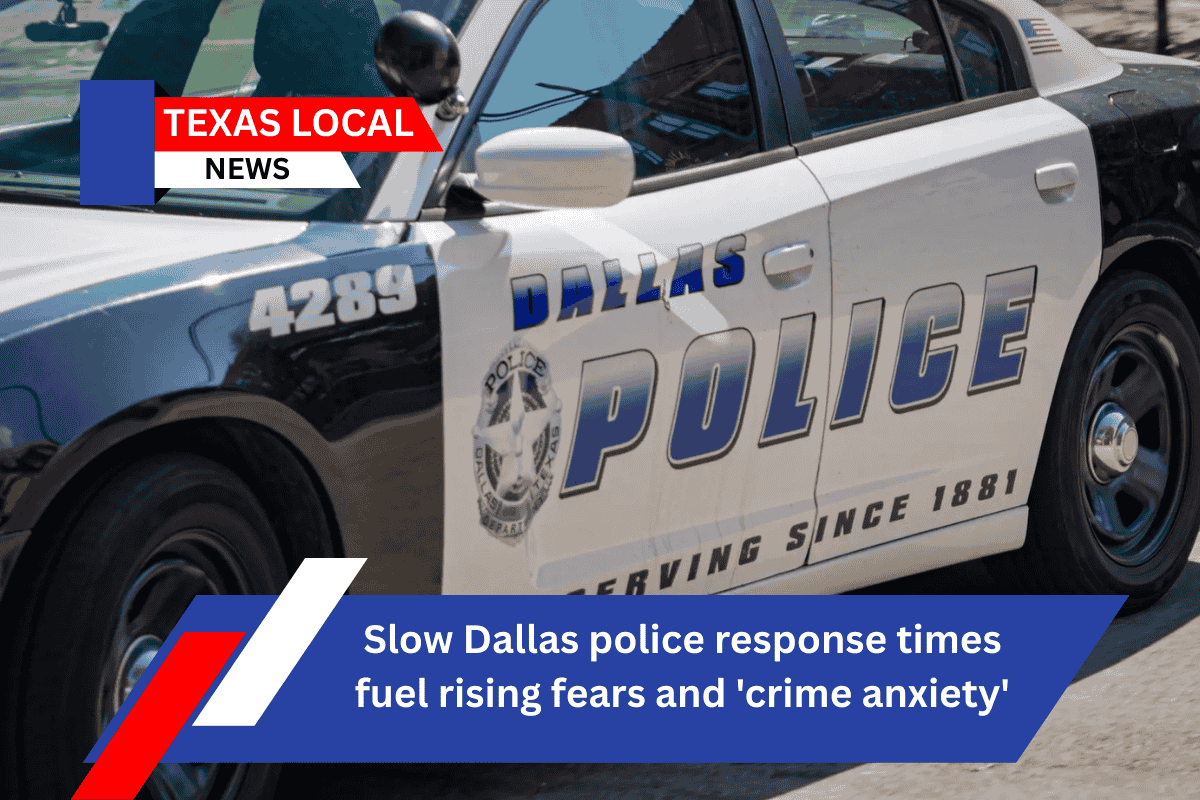If you’ve been shot, stabbed, or are fleeing the scene of a crime on Interstate 75, you can count on a big number of Dallas police officers to arrive in the blink of an eye, even if it’s a very slow 10.67 minutes.
If you have an emergency other than what the Dallas Police Department considers to be the most urgent, or Priority 1 (P1), don’t hold your breath while waiting for the distant sound of sirens. Priority 2-4 emergencies have response times ranging from one hour and a half to four and a half hours.
According to a study conducted by Vivint, a home security firm, Dallas residents are becoming increasingly concerned about crime and home security. It appears that city people want more reinforcement than a department with non-emergency response times comparable to a Hallmark Channel Original Movie.
Burglaries are classified as P3, and according to the most recent DPD data, officers will arrive on the scene in 238.42 minutes, or little under four hours. So, realistically, you could watch a Hallmark movie marathon while waiting. Pop the corn.
The home security business analyzed Google search patterns in the country’s 200 most popular cities. Dallas scored 43rd in general interest in home security, with the first being highly interested, but 183rd in criminal anxiety, with the first being extremely anxious.
Despite ranking low in concern among other cities, Big D’s crime anxiety is up 14% year on year, and home security searches are up 25% from the previous year.
However, DPD has continually improved its response times, and home invasion-related crime rates have decreased from previous year. Since January, there have been 3,742 reports of burglaries or breaking and entering in Dallas.
There were 4,474 burglary or breaking and entering crimes reported between January and September of last year.
Though the department is still two minutes over the eight-minute goal for a P1 crime and occasionally hours over the goal for other priority levels, all response times have improved over last year’s figures citywide. Baby steps.
In April, the department welcomed a new chief, who has taken a no-nonsense approach to improving his new environment, beginning with response times, recruitment, and retention.
“Every call is essential to the people who make them. “So we’re really working hard to make sure our response time is appropriate,” police Chief Daniel Comeaux told Telemundo in May.
For a long time, DPD battled with numbers, falling far short of the office-to-citizen ratio mandated by local code. The rush to recruit for proper policing, which would enhance response times and municipal safety, has fallen on every chief who has worn the badge.
“I need every single person that works for the Dallas Police Department, and not just for the Dallas Police Department, but who lives in Dallas, to become an effective recruiter for us,” Comeaux stated at his swearing-in ceremony earlier this year. “We have to hire more officers.”
That hurry to recruit was accelerated in the November election, when a contentious proposition passed requiring the city to grow its force by 900 officers within a few years. If the city does not meet the metric within a reasonable time frame, it may risk litigation.
The pressure is on, thus the top bullet item in the $5.2 billion city budget for the fiscal year 2025-26 is employing 350 police recruits and sustaining a force of 3,424 officers. The city police budget increased by $46 million to $611.9 million.
“It’s not a perfect budget, but I believe the city manager has done a really good job of bringing us the best she can bring us, given the parameters we have from Proposition U,” a council member, Chad West, told NBC 5.
“… We will see full financing for police and fire departments, as well as a large increase in service funding. “I wish there was more, but it is what it is.”
